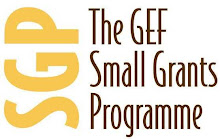
vendredi 5 mars 2010
L'île d'Ambre à bord des avions


jeudi 17 septembre 2009
jeudi 19 février 2009
La Mangrove richesse inestimable

L'île d'Ambre est ceinturée par la Mangrove souvent perçue comme un milieu inhospitalier. Cependant de plus en plus réhabilitée, la mangrove a fait l'objet d'études et se révèle être une source de richesses à plus d'un titre : économique, écologique, pharmacologique....
Les programmes UNEP - WCMC des Nations Unies ont d'ailleurs publié un rapport sur la valeur économique et la fonction de maintien de la vie des récifs coralliens et des mangroves.
Plusieurs sites sont disponibles pour en apprendre plus, suivez le lien ci dessous
"Les eaux au sein et aux alentours des mangroves sont généralement riches en nutriments. Ceci résulte de l'abondante matière organique produite par les palétuviers et par les sédiments pigés entre les racines de ces derniers. Les mangroves produisent annuellement environ 1 kg de litière/ m2, qui forme la base d'un réseau alimentaire complexe et dont une partie est exportée avec la marée.
De ce fait les mangroves favorisent une fabuleuse vie marine et souvent elles servent de frayère, de nurserie, d'abris pour des juvéniles de poissons ou crustacés dont les adultes sont trouvés plus au large...."
mardi 11 novembre 2008
Ile d’Ambre eco management project
Ile d’Ambre and ilôt Bernache, with its adjacent lagoon, is a particularly suitable area for introducing environmental education and sensitisation initiatives as it lies adjacent to a heavily populated area, and yet is easily accessible for field visits. Also, the islets and lagoon region contains a wide variety of terrestrial and marine habitats, including some unique habitats that can be developed as special features, that will provide students, researchers and visitors (tourists and locals) a good, practical introduction to the coastal environment.
One focal point of interest for research within this project is the presence of sea turtles which needs to be further investigated and can represent a unique feature;
The islands are used by the local community and tourists for picnics, resulting in severe habitat degradation and an accumulation of rubbish. It is essential that environmental awareness is raised among the operators many of whom are fishers with only a part time interest in tourism. It is also important that the visitors are fully informed of the environmental implications and contribute to the sustainable management of the area rather than its degradation. If managed correctly, Ile d’Ambre and the adjacent region of Mauritius could become an area of great local and national importance for ecotourism development.
The Ambre eco management project is in accordance with the GEF-SGP Strategy which promotes activities with regard to conservation and sustainable use and management of biodiversity in coastal, marine and freshwater ecosystems (OP 2) and UNEP WioLab which "addresses some of the major environmental problems and issues related to the degradation of the marine and coastal environment resulting from land-based activities (LBA) in the Western Indian Ocean (WIO) region". It is also in line with government policy and its international commitment with regard to environment preservation whereas to address the issue of coastal zone management in the country while at the same time tackling that of poverty alleviation through integration and empowerment of local communities in the development process. In fact it is going to contribute and add on to other initiatives of NGOs, multilateral agencies and the private sector. In trying to achieve the above-mentioned objectives, the current project will therefore contribute in the common effort to achieve the MDGs (Millenium Development Goals), in particular poverty alleviation and environmental sustainability.







